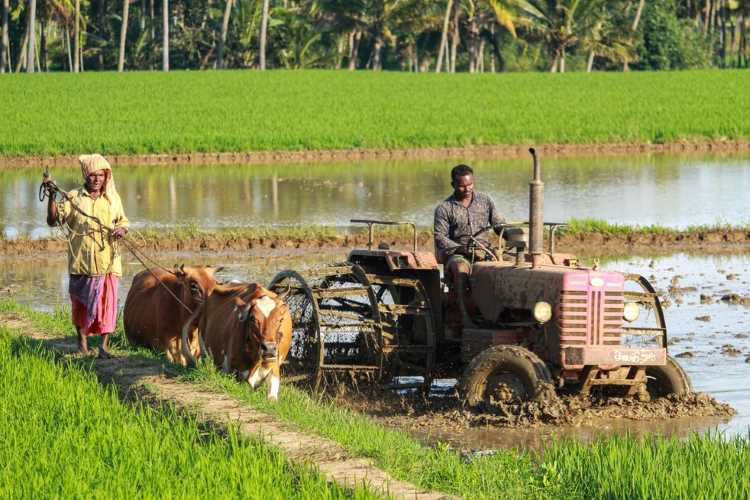
By Prof Ashok Vishandass and Nitisha Thakwani
Gold is gold when it is sold. What farmers produce is no less precious than gold. At one level, India’s agri-strategy has been successful in the sense that the country moved from import-dependence to self-sufficiency and went on to become a net food exporter. At another level, it failed to raise farmers’ income levels commensurately. Implicit in the agri-strategy was that the benefits of increased production and productivity would percolate down to the welfare of farmers. However, the strategy by-passed their income levels. Clearly, something has been missing in our agriculture. All that is required is to ensure just two things: get the prices right and get the markets right. Just getting the prices right may be a necessary condition, but not sufficient. Imagine a situation when farmers get most lucrative prices, but half of their marketable surplus remains unsold, they would still be left high and dry.
So far, the focus of marketing has been solely on price discovery. At best, 50% of marketable surplus in India get integrated with marketing. Even if we ensure the best prices for this much production, remaining half of the marketable surplus still fail to get monetised. We should aim at evacuating all the surpluses of all the commodities from all the corners of the country to demand centres. With a view to improve the functioning of markets and create a free and efficient agri-eco-system, the Narendra Modi government has brought out three pieces of legislation.
READ I Insolvency resolution: Why corporate MSMEs deserve special treatment
The Farmers’ Produce Trade and Commerce Bill
This will enable barrier-free trade and movement of farm produce, and would also allow farmers to engage in inter-state trade. The direct trade law provides for the creation of an ecosystem wherein the farmers and traders enjoy the freedom of choice relating to sale and purchase of the produce. This enables inter-state and intra-state trade across the nation, and is an alternative channel to, not a substitute of, the APMCs. The spectrum of purchasers will now include wholesale traders, processors, exporters, enriching the value chain. This will lead to a larger number of bids for farmers’ produce, prompting more competitive and remunerative prices.
The Farmers’ Agreement on Price Assurance and Farm Services
This will enable the farmers negotiate future price risks that come from fluctuations, apart from benefiting from multi-party contracts for various services at the production stage. This will usher in contract farming that could lead to assured prices on agricultural produces for farmers. The strength of the legislation lies in protecting the ownership of the farmers over land, even as they enter into agreements with sponsoring companies.
READ I Race to Covid-19 remedy: Will the Oxford vaccine fail?
The Essential Commodities (Amendment) Bill
This will remove cereals, pulses, onions, potatoes, edible oil and oilseeds from the Act. The ECA, 1955 was relevant when the country was witnessing scarcity of the commodities. It is no longer relevant when we are net food exporting country. The free and fair-trade environment is complemented by the amendment effected to the Essential Commodities Act, 1955. It deregulates the foodstuffs, removing the power to impose stock limits, and to be imposed, if at all, only under certain conditions that are objective and quantifiable. This amendment is imperative for the market reforms to yield the intended results in favour of the farmers.
The clear intent of these reforms is to provide farmers with a range of choices in the agri-business market place. The free agri-market place will unlock opportunities for new investments and will help India to become the food basket for the world with agri-exports of more than $60 billion. The three new reforms would release the farmers from the predicament of restrictive trade practices and cartelised operations, will bring the farmers welfare to the centre of the development agenda. It will prove to be a watershed moment in the Indian agriculture, similar to what delicensing of industry did in 1991. Now, there is a credible hope that farmers welfare and their incomes will be on higher trajectory of growth.
(Dr Ashok Vishandass is Professor (Applied Economics) at Indian Institute of Public Administration and former Chairman, CACP, ministry of agriculture. Nitisha Thakwani is a management professional. The views expressed in this article are personal.)
